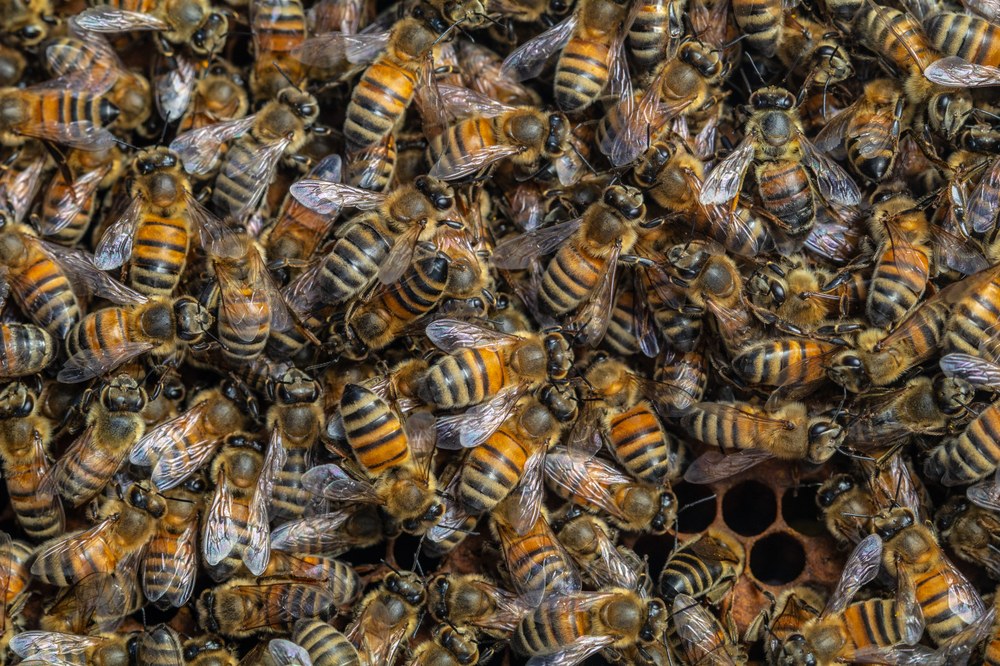Posted: March 15, 2021
CPR Fellow Katie Barie highlights some of the extension acheivements of Dr. Kim Skyrm (President, Apiary Inspectors of America & Chief Apiary Inspector of MA), such as using IPM strategies to control the Varroa mite in managed honey bee colonies.

Photo by Nick Sloff
Beekeepers face many challenges maintaining honeybee colonies. One primary challenge is managing and treating an array of honey bee pathogens and parasites. A particularly challenging parasite is the Varroa destructor mite. Varroa mites feed on the body fluids of honey bees and wreak havoc on the health and productivity of honey bee colonies. Varroa mites weaken honey bees reducing their lifespan and winter survival. The mites feeding behavior also transmits various pathogens.
Varroa mites are native to Asia and were first detected in the United States in the late 1980's. Since their arrival, many prevention, monitoring, and treatment techniques have been developed. Some of these techniques are more effective than others, and beekeepers are faced with deciding how to best manage and treat varroa mite outbreaks. Though there is a lot of information available on varroa mites, it can be overwhelming to create an effective and successful varroa management plan. In fact, a survey of Massachusetts beekeepers indicated that despite the information available, varroa mites are the main cause of colony losses and the primary concern of beekeepers. The results of this survey inspired Massachusetts State Apiarist, Dr. Kim Skyrm to find a way to help northeast beekeepers understand the tools available to manage varroa populations in their apiaries.
Dr. Skyrm along with Maine State Apiarist Dr. Jen Lund developed a varroa mite webinar series for beekeepers. Additionally, in collaboration with University of Massachusetts extension, they developed a varroa monitoring kit and pamphlet. The varroa mite monitoring kit provides beekeepers the tools and information to utilize an inexpensive and reliable method for monitoring varroa. The pamphlet distils the information available on varroa management from great sources such as the Honey Bee Health Coalition into an easy-to-use visual guide for beekeepers. It also outlines both preventative measures and varroa treatments available and how to use treatments methods appropriately.
Since the program has started, surveys have indicated that there has been an increase in beekeepers monitoring for varroa in addition to treatments. Moving forward Dr. Skyrm hopes to help beekeepers think holistically about managing their honey bees and developing an effective varroa management plan for their colonies. If you would like to hear more about the programs and research discussed here you can watch Skyrm's lecture on IPPM in developed landscapes on the Penn State Insect Biodiversity Center website.

